News 4/4/12
Top News

A National eHealth Collaborative paper says that HIEs have great potential to improve care and reduce cost, but despite ONC emphasis and incentives, not a lot of value has been realized so far. Big issues remain funding, provider adoption, and difficulties connecting to the wide variety of available EMRs. They recommend focusing on patients above all else, build trust and a common vision among participants that often don’t particularly like or trust each other, ignore “one size fits all” proposals and listen to what the local community wants, and figure out how to make money once the grants run out.
From Hardware Sue: “Re: Navin, Haffty & Associates. Heard that Park Place International is looking to buy them out.” Not true, NHA President John Haffty tells me. Park Place has expanded its technical offerings related to Meditech and NHA has collaborated with them on projects and will continue to do so since their work is complementary, but no acquisition-related discussions have been held or encouraged. Per John, “We have great respect for the old and new team over at Park Place, but we are committed to maintaining our independent status.” Norwell, MA-based NHA offers consulting services exclusively for Meditech customers.
From JayGlo: “Re: security testing firms. Know any that specialize in EHRs in general and Epic in particular? Who are the best white hat hackers?” I’ll defer to readers – leave a comment if you have suggestions.
From ForthePatients: “Re: Tampa Bay RHIO. Work has been dragging in the swamp for almost five years with a long list of special interests – academic medicine, lawyer, homegrown exchange vendor, and hospitals interested in connecting to their own practices. Who controls what is clearly a the crux of this one and not a focus on the patients or the community.”
Acquisitions, Funding, Business, and Stock

Santa Rosa Consulting announces that it has completed its acquisition of Nashville-based healthcare IT consulting firm InfoPartners.
Charge master vendor Craneware opens an office in Scottsdale, AZ.
Merge Healthcare shares dropped 16% on Tuesday after the company filed an SEC 8-K form indicating that a $2.75 million sale of kiosks was to higi LLC, a company founded and controlled by Merge Chairman Michael Ferro. Merge’s audit committee had cleared the sale. Merge topped the biggest percentage price decliner on Nasdaq list, shedding nearly $90 million of value for the day.
Sales
Cooper University Hospital (NJ) signs a three-year agreement with Newport Credentialing Solutions for its reporting and analytics software and back office credentialing solutions.
Southeast Michigan Beacon Community selects Covisint’s accountable care technology to aggregate regional health information.
DuPage Medical Group (IL) selects Humedica MinedShare to provide clinical benchmarking and analytics from its Epic EMR.
Einstein Healthcare Network (PA) licenses business analytics and patient financial services solutions from Streamline Health to monitor and drive revenue cycle performance in its 1,000- physician ambulatory care network.
Mount Sinai Medical Center signs with Siemens MobileMD for an HIE service agreement.
People
Cognosante names Eileen Cassidy Rivera (Vangent) as VP of marketing and communications.
Former Cigna VP of IT Marcus B. Shipley joins Trinity Health (MI) as SVP and CIO. He replaces Paul Browne, who has been named Trinity’s SVP of integration services.
Nashville-based The Rehab Documentation Company, which sells therapy documentation systems, names Antoine Agassi as president and COO. He comes from Cogent Healthcare and was previously chair of Tennessee’s Governor’s eHealth Advisory Council and held executive roles at Spheris and WebMD Transaction Services.
Announcements and Implementations
Southeastern Med (OH) hosts a midnight ribbon cutting ceremony to officially launch its Meditech go-live.
West Calcasieu Cameron Hospital (LA) launches bedside bar code verification with McKesson’s Horizon Admin-RX.
Biggs-Gridley Memorial Hospital (CA) goes live on the Prognosis ChartAccess EHR.
Humana Cares completes installation of a 1,600 monitoring devices for a telehealth pilot project, where nurses will remotely check the vital signs daily of CHF patients in hopes of decreasing hospitalization. The project uses the Intel-GE Care Innovations Health Guide, a blood pressure monitor, and scales.
Government and Politics
A bipartisan group of House and Senate lawmakers introduces a bill proposing to link the prescription drug monitoring programs of individual states, allowing prescribers to look for patterns of prescription drug abuse across state lines.
VA CIO Roger Baker says the $4 billion joint VA/DoD EHR system could be available by 2014 and will be piloted at military installations in Hampton Roads, VA and San Antonio, TX.
The VA cancels its Software Assurance agreement with Microsoft covering its 300,000 users, giving the agency flexibility in seeking non-Microsoft alternative technologies, such as tablets and cloud-based systems.
The Coast Guard prepares to go live on its Epic-based EHR. It plans to provide mobile access via cellular network and to run cached copies of information from its vessels, which often do not have connectivity. The Coast Guard is looking for companies to provide service desk support.
Innovation and Research
A study performed in large UK teaching hospital finds that off-hours clinician response and satisfaction improved when pagers were replaced with wireless call handling and task management. Tasks were logged on a PC that sent messages to a coordinator’s tablet, who then routed the tasks via text message to on-call phones. Users liked the improvement in handoffs: task prioritization, the ability to monitor task assignment and completion, and elimination of handwritten notes.
Technology

Rochester, MN-based mobile healthcare apps vendor Preventice, partly owned by Mayo Clinic, expands into the medical device business with BodyGuardian, a diagnostic heart and respiratory monitor that patients can wear during normal activity. The company says the final product, when approved by the FDA, will be just 8×8 mm in size (about a third of an inch high and wide) and will attach like a Band-Aid for up to seven days, sending the physician a text message and EKG by Bluetooth when it detects cardiac events. The company plans to hire 15 employees and will move to new headquarters in Minneapolis.
Microsoft announces the 11 startups chosen from 500 applicants that will participate in its 2012 Kinect Accelerator. Among them are GestSure, which creates touchless interfaces for surgeons and interventional radiologists; and Jintronix, a virtual reality rehabilitation system for patients with motor control problems.
Other
The University of Arizona Medical Center will replace Allscripts and iMed with Epic at its two hospitals and outpatient centers. The project will cost $100-135 million, will require 87 full-time employees over the next three years, and will involve providing 12 hours of training to each of 6,000 employees. Four miles away, Tucson Medical Center is already running Epic, having completed its rollout in June 2010.
Partners HealthCare researchers find that the number of lab tests ordered for outpatients who were seen at both at Brigham and Women’s Hospital and Massachusetts General Hospital dropped from seven to four after implementation of an HIE that allowed previous results to be viewed by either facility. The full text article isn’t available online to non-subscribers and the usual disclaimers apply: the study sample appears to be quite small, the study data was old (1999 to 2004), and whatever correlation was implied does not prove causation.
Despite a fall in net income from $158 million in 2010 to just $1 million in 2011, Novant Health (NC) will spend $600 to $700 million over the next four years on its Epic project. Novant expects the first of its 13 hospitals to go live by the end of 2013.
Several readers found this non-HIT story interesting enough to send over. The $4 million-per-year CEO of Pittsburgh-based insurance company Highmark is fired after an ugly love triangle fight over his 28-year-old girlfriend, who worked for him at Highmark. Kenneth Melani, 58 and married, showed up at the girlfriend’s home and refused to leave when ordered by her 48-year-old husband, resulting in criminal charges. Melani has engaged an attorney to determine whether his dismissal was legal, while the DA agreed to postpone his preliminary hearing provided he undergoes anger management counseling.
Leila Denmark MD died this past weekend in Georgia at 114 years old. She she was the world’s oldest practicing physician when she retired at 103, having begun her pediatrics practice in Atlanta in 1931.
Sponsor Updates
- Practice Fusion customers have received $22 million in EMR incentives through January, the company reports.
- Emdeon offers a free weekly webinar on Emdeon Vision for Claim Management.
- The HITR nursing technology blog is running a Bodacious Scrubs contest through April 25.
- Iowa Health System contracts with Hayes Management Consulting and Coastal Healthcare Consulting to provide legacy support services.
- MED3OOO’s IT and services divisions hosts a virtual job fair May 2.
- Encore Health Resources names attorney Tom Luce to its board.
- ICA launches HIT Me Blog with commentary on current healthcare and HIT issues.
- Lifepoint Informatics will participate in the 2012 Executive War College on Laboratory and Pathology as a corporate benefactor. The event will take place in New Orleans May 1-2.
- Cognosante and 3M partner to provide 3M’s ICD-10 Code Translation Tool to state-sponsored health plans.
- MedHOK announces that its 360Measures V 2.55 has achieved 2012 P4P certification.
Contacts
Mr. H, Inga, Dr. Jayne, Dr. Gregg.
More news: HIStalk Practice, HIStalk Mobile.










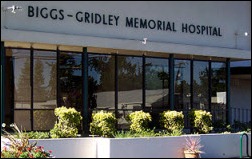















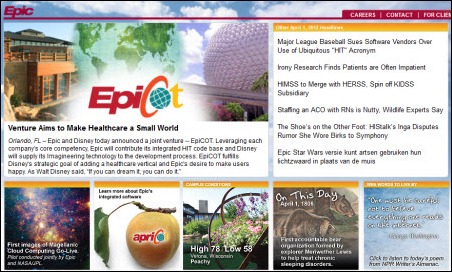






































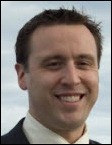
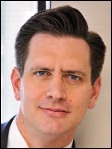













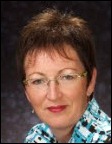


















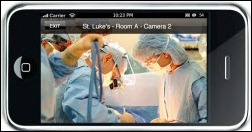



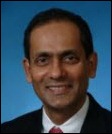









Merry Christmas and a Happy New Year to the HIStalk crowd. I wish you the joys of the season!